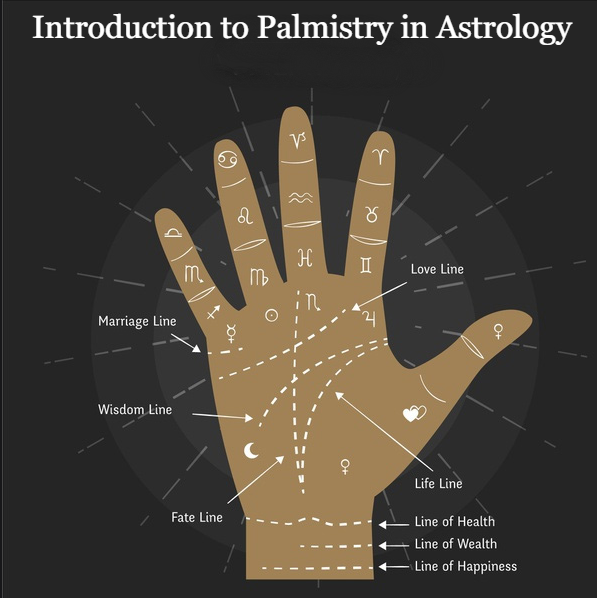Introduction to Palmistry in Astrology
- maaambeastrologer
- Jan 10
- 3 min read
Palmistry, also known as chiromancy, is an ancient art and science that studies the lines, shapes, and other features of the palm to gain insight into a person’s personality, future, and destiny. Rooted in traditions that are thousands of years old, palmistry has captivated the human imagination across cultures and civilizations. It is often linked to astrology, as both disciplines aim to understand human life and cosmic influences. In this blog, we will explore the basic principles of palmistry, its connection to astrology, and how it can provide valuable insights into the mysteries of life. Palmistry is believed to have originated in ancient India and was used alongside astrology in Vedic traditions. References to palmistry can be found in Hindu scriptures, including the “Samudrika Shastra,” which deals with the study of physical features to interpret personality and destiny. From India, the practice spread to China, Persia, and ancient Greece.

In Greece, palmistry gained significant recognition through the philosopher Anaxagoras and later Aristotle, who documented its principles. Aristotle's writings on palmistry attracted Alexander the Great, who is said to have used it to assess the strengths and weaknesses of his soldiers. Over time, the art of palmistry spread to Europe, where it flourished during the Renaissance, and was studied by scholars and mystics. Palmistry and astrology share a common goal. Understanding human destiny and the underlying influences that shape our lives. Horoscope Reading Service in Ahmedabad uses the positions and movements of the planets to analyse personality traits and predict events, while palmistry examines the lines, mounts, and shapes of the palm to gain similar insights. In palmistry, each area of the hand is associated with a specific planet. By studying these mounts and their corresponding lines, palmists integrate astrological principles into their readings.
Understanding Palm Lines: The lines on the palm are one of the most important aspects of palmistry. Each line is believed to represent a specific area of life, and their length, depth, and clarity can provide significant insight. The major lines in palmistry include:
1. Heart Line: Located at the top of the palm, the heart line represents emotional well-being, love, and relationships. A long and deep heart line indicates a compassionate and emotionally balanced person, while a broken or blurred line may indicate emotional conflict.
2. Head Line: Located below the heart line, the head line represents intelligence, decision-making ability, and thought processes. A straight head line indicates practicality, while a curved line indicates creativity and flexibility in thinking.
3. Life Line: Surrounding the thumb, the life line is often misunderstood as a predictor of longevity. Instead, it reflects vitality, physical health, and important life events. A long and unbroken life line indicates strong health, while a faint or broken line may indicate challenges.
4. Fate Line: Also known as the Fate Line, this vertical line runs from the base of the palm to the middle finger. It indicates career, achievements, and direction in life. A strong Fate Line indicates a determined and goal-oriented person, while a weak or absent line indicates a more fluid and adaptable path.
In palmistry, the shape of the hand and fingers plays an important role in understanding personality traits. Hands are generally categorized into four types, corresponding to the elements of astrology. One of the most interesting aspects of palmistry is its ability to serve as a tool for self-discovery. By analysing the lines and shapes of the palm, individuals can gain insight into their strengths, weaknesses, and potential challenges. Palmistry encourages introspection and helps people understand their unique paths in life. In today’s fast-paced world, palmistry continues to attract people seeking answers about their lives and futures. Despite its ancient origins, the art has evolved to incorporate modern interpretations and techniques. Many practitioners combine palmistry with other spiritual sciences, such as astrology, numerology, and tarot, to provide holistic guidance. Palmistry, with its rich history and deep connection to the Maa Ambe Astrologer, is an interesting and insightful practice. It bridges the gap between science and mysticism, offering a unique perspective on life’s journey. Whether used as a tool for self-reflection or as a guide to navigating life’s challenges, palmistry continues to inspire curiosity and wonder.
Want To Know About Your Life? Talk To our astrologer








Comments